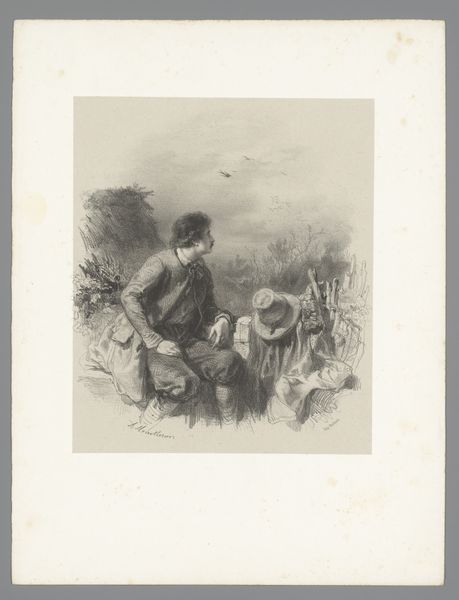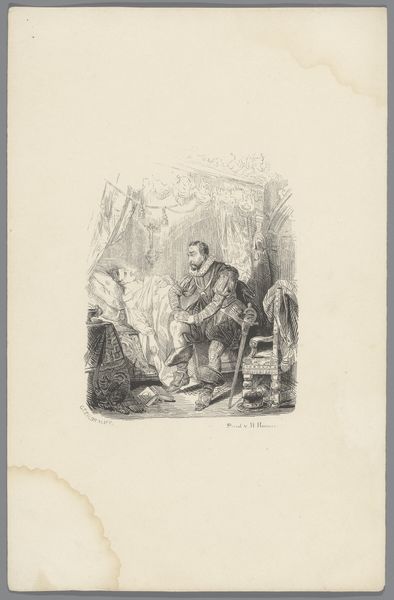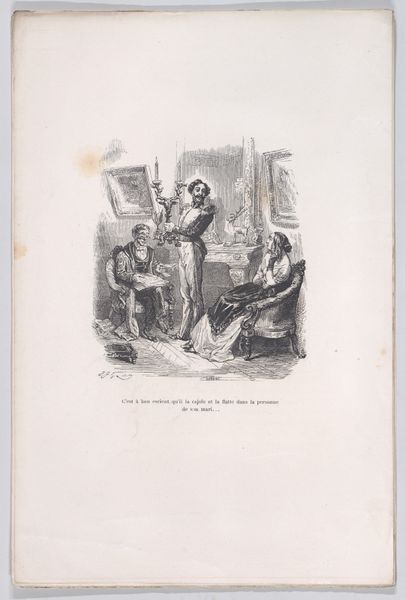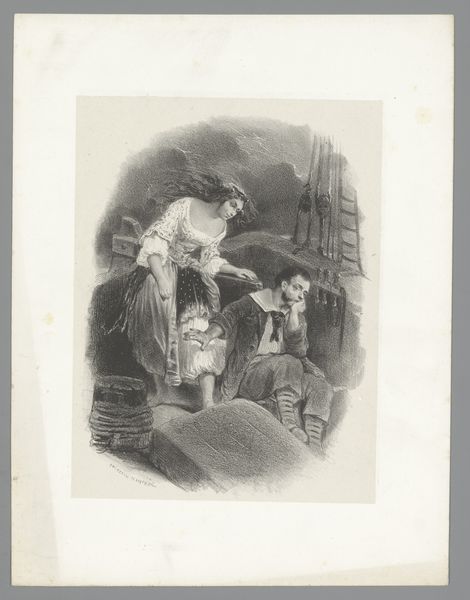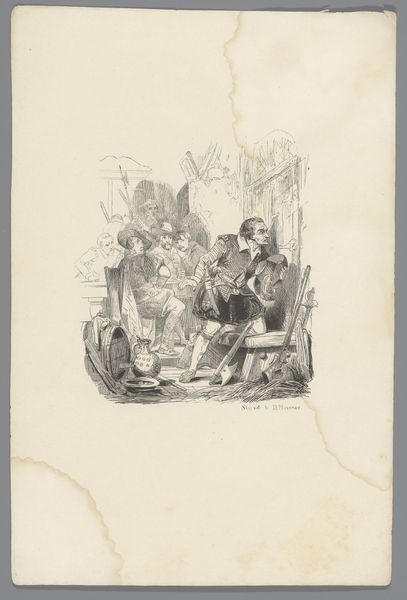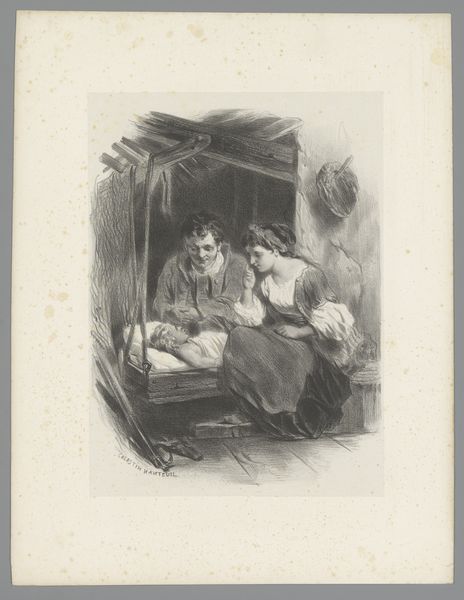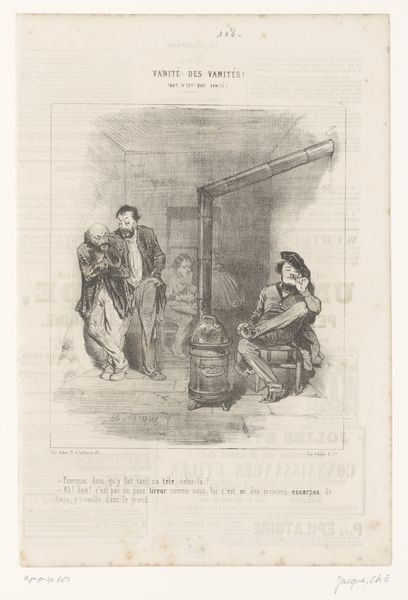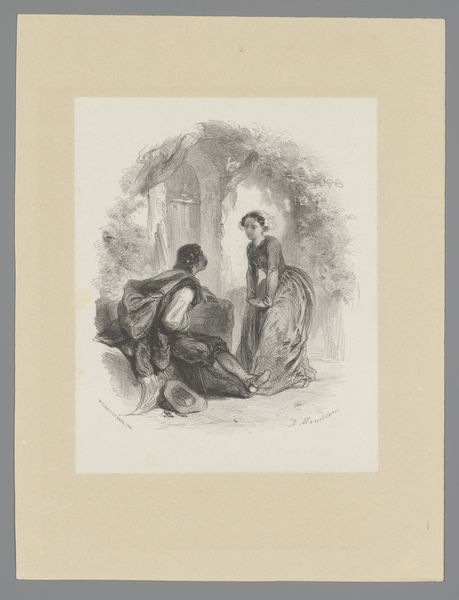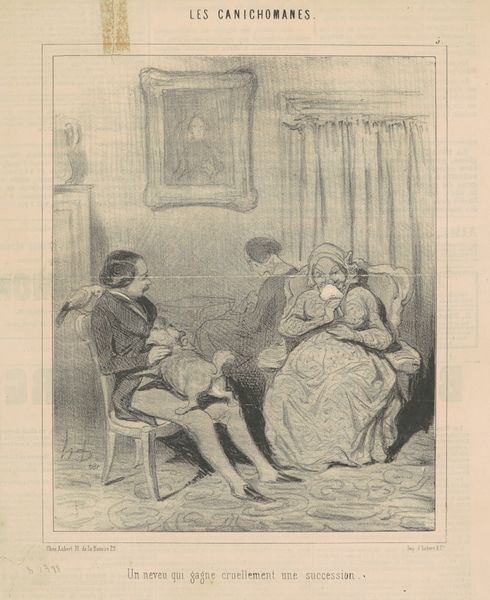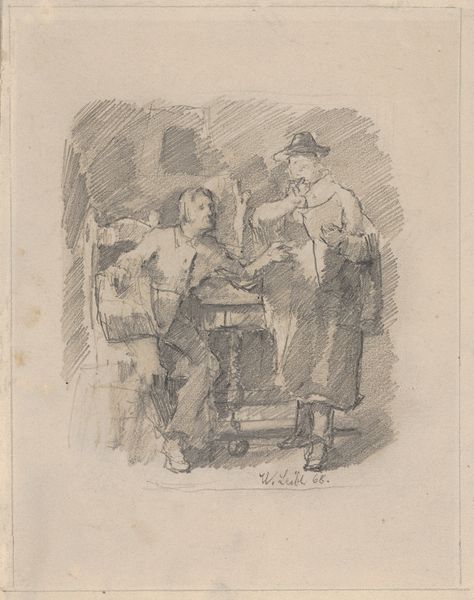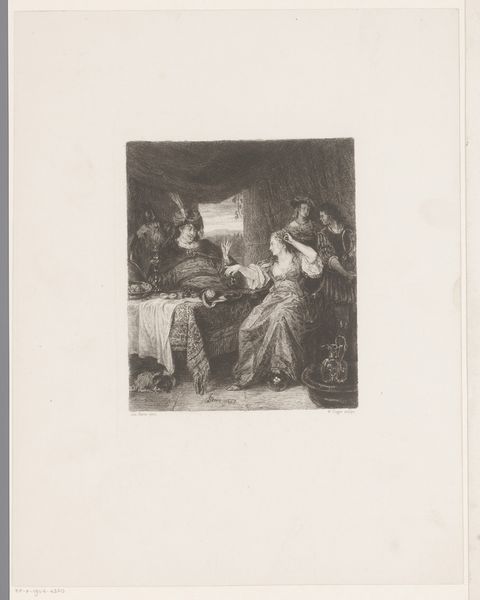
drawing, ink, pencil
#
drawing
#
narrative-art
#
pencil sketch
#
figuration
#
ink
#
romanticism
#
pen-ink sketch
#
pencil
#
sketchbook drawing
#
watercolour illustration
#
genre-painting
Dimensions: height 352 mm, width 266 mm
Copyright: Rijks Museum: Open Domain
Curator: This is "Two Smiths at Work," a drawing rendered in pencil and ink by Célestin Nanteuil, created sometime between 1823 and 1873. Editor: Immediately I feel a raw energy coming from this. It is very romanticized in its depiction of labor, you know? I am wondering if these guys realize the camera is rolling. Curator: It reflects a Romantic-era fascination with labor, presenting a sympathetic, though somewhat idealized, view of tradesmen. We see it emerging through the genre paintings gaining traction at the time. Notice how the setting is almost theatrical, which underscores the dramatic tone that the Romantics favored. Editor: Yes! The drama, it's like these aren't just blacksmiths; they're performing "blacksmith." It makes you consider: who were these men, and who was meant to see them toiling? What are the power dynamics implied here? Curator: Good question. Nanteuil aimed for public recognition. Exhibitions at salons or similar art venues would have allowed him to demonstrate a range of talent. This drawing fits that need through the clear lines, varied shading, and dynamic composition. Editor: Technique-wise, I love the frenetic, scribbled background. It suggests not just a setting, but a mood—the heat of the forge, the clanging of the hammer. Like some inner turmoil finding expression in the outer world, it almost hints to something existential happening beyond the mere making of things. Curator: Indeed, that expressive freedom also marked Romanticism. And there is a touch of that in here. The play between realism in the smith's figures, and then this dramatic atmospheric haze swirling around them really reinforces a very distinct emotionality, a hallmark that distinguishes Nanteuil from Neoclassical artists from a few years prior. Editor: So, while this might not capture the gritty reality of working men’s lives, it gives us something perhaps more potent: the feelings *about* those lives, right? And I get all that just from seeing it! Curator: Precisely. Its emotional expressiveness made "Two Smiths at Work" successful. The print circulated in the late 19th century among those wanting an elevated idea about those who performed manual labor. Editor: An "elevated idea." I will remember that. Makes me wonder what they thought an 'elevated idea' actually entailed.
Comments
No comments
Be the first to comment and join the conversation on the ultimate creative platform.
